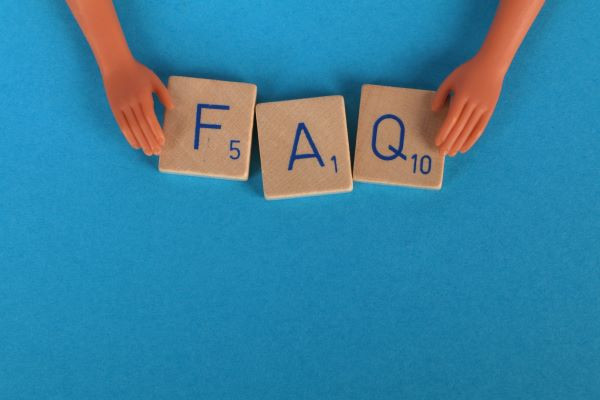
Answering some FAQs
13th Oct 2020
Got unanswered questions? Read on! Read below to see some of our FAQs answered.

Is your paper sourced from managed plantations?
All our paper is sourced from managed plantations. Paper is sourced from the following suppliers: Stora Enso, WestRock or Clearwater Paper. Each of these companies, like us, are committed to sustainability and environmental responsibility.
Where are your cups made?
Our paper BioCups are made in our production facility in Taiwan. The factory is the third largest cup producer outside of the USA. The factory produces in excess of 170 million cups every month.
What is bioplastic?
A bioplastic is a substance made from organic biomass sources, unlike conventional plastics, which are made from petroleum. Bioplastics are made through a number of different resources such as vegetable oils, cellulose, starches, carbohydrates, acids and alcohols. Almost all bioplastics produce less CO2 and their overall environmental impact is typically lower than that of conventional plastics. Some biodegradable bioplastics can break down in 180 days, given the right conditions. Others are not biodegradable at all.
Do bioplastics use agricultural resources?
Yes, bioplastics are made from plant-starch by-products of the agricultural industry. Plants absorb carbon dioxide during their growth and convert it into carbon-rich organic matter. When these materials are used in the production of bioplastics, the carbon is stored within the products during their useful life. This carbon is then released back into the atmosphere (e.g. through energy recovery or composting). Production of bioplastic has little to no effect on food prices or supply.
In 2013 the global production capacities for bioplastics amounted to around 1.6 million tonnes. This translates into approximately 600,000 hectares of land. The surface area required to grow sufficient feedstock for today’s bioplastic production is therefore about 0.01% of the global agricultural area of 5 billion hectares. This ratio correlates with the size of an average cherry tomato next to the Eiffel Tower (based on market data by EUBP/IfBB/nova-Institute, 2014).
Assuming continued high – and maybe even politically supported – growth in the bioplastics market, at the current stage of technological development, a market of around 6.7 million tonnes accounting for about 1.3 million hectares could be achieved by the year 2018. This market equates to approximately 0.02% of the global agricultural area. There are also many opportunities – including using an increased share of food residues, non-food crops or cellulosic biomass – that could lead to even less land use demand for bioplastics than the amount given above.
What is the bioplastic shelf life?
Our clear cups, bowls and cutlery have a 6-12 month shelf life at least and must be stored below 35ºC. Do not store in direct sunlight, near heat sources or heaters. Our bioplastic bags have a 6-month shelf life from purchase and must be stored out of direct sunlight and below 35ºC.
Are GMO crops used for bioplastics?
The use of GMO crops is not a technical requirement for the manufacturing of any bioplastic commercially available today. If GM crops are used, the reasons lie in the economic or regional feedstock supply situation. If GM crops are used in bioplastic production, the multi-stage processing and high heat used to create the polymer remove all traces of genetic material. This means that the final bioplastic product contains no genetic traces. The resulting bioplastic is therefore well suited to use in food packaging as it contains no genetically modified material and cannot interact with the contents.
What are the benefits of sugarcane pulp?
There are many benefits of using sugarcane pulp packaging product. Using sugarcane pulp as a raw material protects forests. While 5 tons of wood are needed to produce 1 ton of pulp for paper, only 1.5 tons of sugarcane pulp are needed to produce the same amount. Sugarcane pulp packaging production requires fewer toxic chemicals. Agricultural crops are easier to turn into pulp than wood is, and consequently, they require smaller quantities of toxic solvents to turn them into pulp for paper-making.
Importantly this is a rapidly renewable resource and sustainable – unlike paper or card from virgin forests, which are endangered by human harvesting. Agricultural waste will be readily available as long as humanity engages in agriculture. Agricultural waste like sugarcane pulp can make a side-trip from the cycle of life to serve as paper, then re-enter the cycle as compost to nourish new crops. In addition to the environmental benefits, we use sugarcane pulp for our packaging because it functions so well for food service – our products are sturdy and strong, microwave and freezer safe, can handle hot liquids up to 120 degrees centigrade and they are non-allergenic and gluten-free.
Are sugarcane takeaway containers oven safe?
Yes! We have a plastic-free and tree-free takeaway container that works. Our BioCane Takeaways have a perfect seal and are freezer, microwave and oven safe. They can be heated in the microwave and oven up to 220 degrees centigrade. So you can now make ready-to-serve meals off-site, freeze them for transport and reheat in the oven for serving.
Information taken from BioPak's website. Read about our role and the government's role in achieving a circular economy and why we need a global plastics treaty on our blog.
Planet Friendly Packaging acknowledges the traditional custodians of the land on which we work. Our thoughts go out to all those affected by COVID-19. Stay safe.

